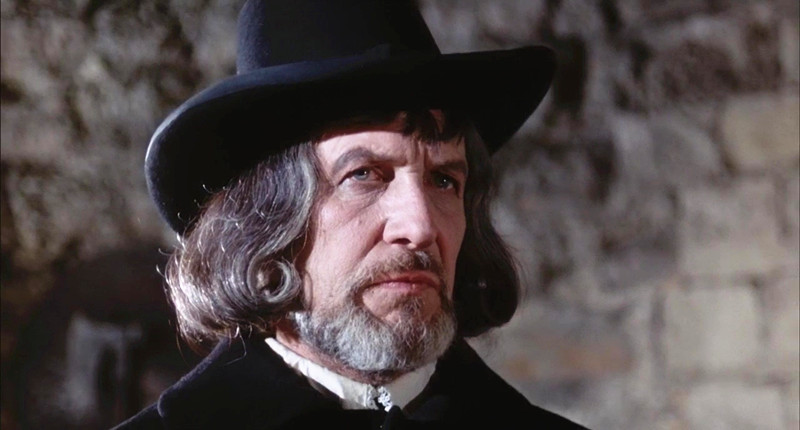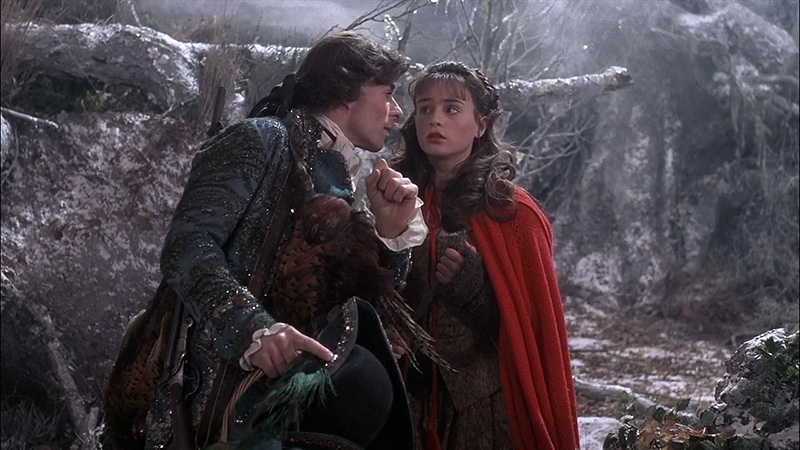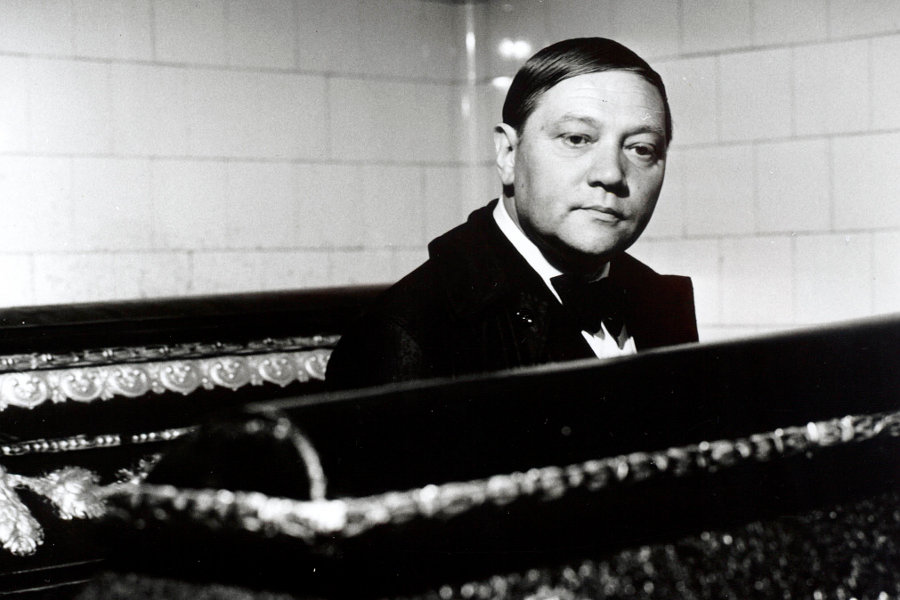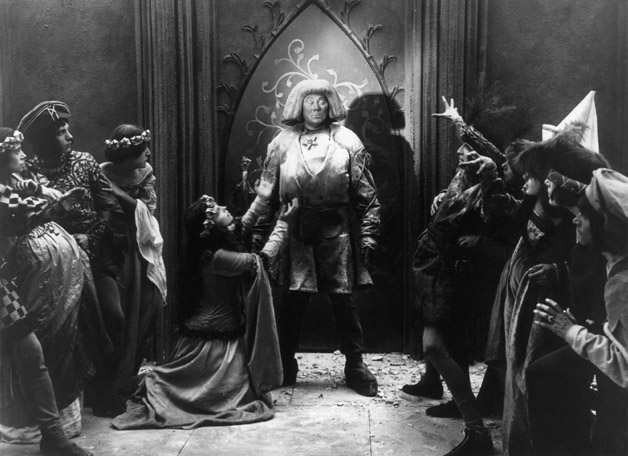
In horror’s earliest incarnations many of the narratives were inspired by the Gothicism found in the works of Mary Shelley, Edgar Allen Poe, or Bram Stoker. Dracula, Frankenstein, Dorian Grey, and Jekyll and Hyde (among others) were stories that frequently appeared early on, paving a platform for a genre that heavily relied on strong visuals, a sense of location and setting, and an emphasis on audience response.
Horror cinema’s birth could arguably be said to come from France in Georges Méliès’ supernatural short film, The Haunted Castle, released in 1896. Here, Méliès plays with vampire tropes, shapeshifting ghouls, flying creatures, and skeletons, iconography that would come to define large parts of the horror genre, utilised here in short, three-minute tableau. Méliès would go onto make another film with the same title a year later only to continue his interest in the supernatural throughout his career with films like The Infernal Cauldron (1903), The Merry Frolics of Satan (1907), and The Knight of the Snows (1912).
In 1911, L’inferno by Francesco Bertolini, Adolfo Padovan, and Guiseppe De Liguoro used state-of-the-art special effects to depict Dante’s Hell, making it often referred to as the first blockbuster film. Paul Wegener and Stellen Rye’s German silent film, The Student of Prague (1913), laid many of the foundations for the German Expressionism movement that would produce Robert Wiene’s The Cabinet of Dr. Caligari (1920) and F.W. Murnau’s Nosferatu (1922), two of the most revered horror films in cinema history. Meanwhile, elsewhere in Europe, Victor Sjöström’s The Phantom Carriage (1921), Jean Epstein’s The Fall of the House of Usher (1928), and Carl Th. Dreyer’s Vampyr (1932) helped influence and inspire the horror cinema to come – Epstein’s film crucially being the second writing credit for Luis Buñuel, too.
The 1930s saw the rise of British filmmaker James Whale where his films Frankenstein (1931), The Invisible Man (1933), and The Bride of Frankenstein (1935) added to, arguably, the first film franchise. Whereas, his film The Old Dark House (1932) founded the horror trope of finding refuge in an old house while being lost in a terrible storm. James Whale’s successful films seem apt progenitors to the Hammer Film Productions that would come to prominence in the mid-50s with The Curse of Frankenstein (1957), Dracula (1958), The Mummy (1958), and The Hound of the Baskervilles (1959) being key horror films from the period – significantly all starring Peter Cushing and Christopher Lee.
British horror cinema continued into the 1970s with Nic Roeg’s masterpiece, Don’t Look Now (1973), being a particular highlight, a film that substituted the claustrophobia of the British countryside with the streets of Venice. In Italy, filmmaker’s Mario Brava, Sergio Martino, Dario Argento, and Lucio Fulci pioneered the giallo horror sub-genre with notable films being The Bird with the Crystal Plumage (1970) or Suspiria (1977). Meanwhile, French filmmaker, Jean Rollin, and Polish filmmaker, Walerian Borowczyk were tapping into human desire, making bawdy and erotic horror cinema the likes of which had not been seen before (more from both later).
In recent years the horror genre has made a resurgence too. Robert Eggers’ The Lighthouse (2019) plays almost like an Edgar Allen Poe story akin to the early silent horror films. His debut feature, The Witch (2015), along with Gareth Evans’ Apostle (2018) and Ari Aster’s Midsommar (2019), owe a debt to the folk horror films that came from Britain in the 60s and 70s that reflected on the power of nature and the potential darkness of rural landscapes. Films like the Austrian Goodnight Mommy (2014) use the innocence of childhood as a gateway into a more psychologically grounded horror style. Whereas, J.A. Bayona’s The Orphanage (2007) returns to the Gothicism of early cinema where a childhood home becomes a playground for haunting and fear.
Whatever your take on these kinds of films, European cinema has played a huge part in shaping and reinventing the horror genre. The list below delves into the history of Euro horror by using specific (and perhaps underappreciated) examples, offering an insight into different decades and countries, styles and sub-genres.
10. The Company of Wolves (Neil Jordan, 1984)

Thumbprints of German Expressionism and Gothicism are seen in Neil Jordan’s fantasy horror film, The Company of Wolves. The film is wonderfully designed with a heightened reality, its setting a misty woodland akin to Benjamin Christensen’s revolutionary horror film, Häxan (1922). Based off of two short stories from Angela Carter’s The Bloody Chamber, Jordan creates a dreamscape of imagery and allegories to portray a girl’s passage into womanhood.
A dark reimagining of Little Red Riding Hood, Roseleen (Sarah Patterson) confronts wolves (both literal and figurative) whose cunning and disguise becomes metaphorical for her transition from childhood. Through the sage-like advice from her Grandmother (a woman-who-cries-wolf character delightfully played by Angela Lansbury), Roseleen is able to understand and confront these ‘wolves’, finding a compassion and understanding as she starts to come of age.
The film’s meticulous design is at its best during the period wedding scene that is a particular show-stopping highlight. Here, Roseleen tells the story of debauched aristocracy as they are transformed, by a witch, from noblemen to wolves – finally their outsides match their insides. It is through these momentary sequences where The Company of Wolves separates itself from fantasy films of the period into something with a deeper meaning.
Both dreamy and fairytale-like, Jordan is able to balance straight-up gore that is evocative of David Cronenberg’s early body-horror films with visual imagination reminiscent of films like Time Bandit (1981) or The Princess Bride (1987). The make-up and set design won the film a coveted BAFTA (and rightfully so) but Jordan is able to blend his set design with an imaginative narrative structure where segregated stories align to form a parable on sexual awakening and womanhood.
9. The Cremator (Juraj Hurz, 1968)

A leading example of the Czechoslovak New Wave, The Cremator is, to some, recognised as one of the greatest films made in Czechoslovakia. In antithesis to the social realist films most associated with the Czechoslovak cinema of the 1950s, The Cremator is an absurd and dark comedy that often draws from German Expressionism to give its horror elements a strange edge.
Set in Prague in the late 1930s, Karel Kopfrkingl (Rudolf Hrušínky) works at a crematorium; he loves his job and believes he is doing a moral good by liberating the souls of the bodies he burns. As the Nazi forces start to approach the Czech border, Kopfrkingl’s sanity declines as visions of his ideal self start to infiltrate his day-to-day while his affiliation with the Nazi party grows.
The Cremator is a disorientating narrative told through oblique camera angles, black and white photography, and slick editing that seamlessly bleeds one scene into another. The story is told almost like one long monologue that is only fleetingly interrupted by the other side characters, a technique that draws us further into a stifling and disturbing mind-set. As with most of this list, The Cremator relies on atmosphere and mood, and with Kopfrikingl’s Hitler-like appearance at the centre of the film from the get-go it does not get more brooding than this.
8. Symptoms (Jose Larraz, 1974)

Initially released with the alternate title The Blood Virgin, Symptoms was Britain’s entry into the Cannes Film Festival back in 1974. Originally lauded, Symptoms soon slipped through the cracks, only available on VHS for 40 years and it was only in 2014 that the BFI were able to recover a negative of the complete film and give it a new lease of life (Symptoms is available on BFI Player if you are intrigued).
An eerie and atmospheric film, Symptoms relies on odd moments of silence, its rural English setting, a beautiful score by jazz composer John Scott, and sensitive performances to make a bizarre psychological film. Often compared to Polanski’s Repulsion (1965), another British horror film directed by a European foreigner, Symptoms use of Gothic imagery and Larraz’s eye for visual detail ultimately homage and improve on the Polanski version.
Set in a country manor house, Symptoms follows Anne Weston (Lorna Heilbron), a writer, who goes to spend the weekend with her old friend, Helen (Angela Pleasence), at her family’s estate. The house, now overgrown and unkept, is reminiscent of Daphne du Maurier’s Rebecca (delightfully adapted for the screen by Alfred Hitchcock in 1940). The house acts as the perfect breeding ground for a slow burning psychological torment as attic doors and murky lakes become haunting motifs. Anne is often awoken by mysterious noises and it is obvious her friendship with Helen is not what it once was; Helen, while pleasant at first, is hiding something more shadowy behind her affluent façade.
Larraz constructed, here, a brilliant film that relies on setting and symbols as the primary force for horror, using images to construct its narrative. A brilliant film and brilliant that it is available in all its glory again.
7. The Strange Case of Dr. Jekyll and Miss Osbourne (Walerian Borowczyk, 1981)

Walerian Borowczyk garnered an infamous reputation near the end of his career because of his oft bawdy, fetishist approach and borderline pornographic content. His later work, particularly Immoral Tales (1973) and The Beast (1975), were considered majorly controversial due to their light-hearted and graphic treatment of bestial rape. Though these very films were also lauded for their visionary and unique narrative style, with some considering Borowczyk an appropriate successor to Luis Buñuel.
Borowczyk’s ability to cut through upper-class hypocrisy is most effective, however, in his bizarre adaptation of Robert Louis Stevenson’s Jekyll and Hyde story in The Strange Case of Dr. Jekyll and Miss Osbourne. Set around a dinner party celebrating Dr. Henry Jekyll’s (Udo Kier) and Fanny Osbourne’s (Marina Pierro) engagement, the manor house location adds a claustrophobia akin to Larraz’s film, a maze-like setting capable of entrapping its occupants. After dinner, Jekyll is summoned to his laboratory to finalise his will only to reappear after one of his guests has been brutally raped and murdered, leaving the group fearful for their lives yet rousing their own innate desire to kill too.
Borowczyk blend’s science fiction and horror with psychedelic effect with the transformation scene from Jekyll to Hyde being a particular highlight where Jekyll writhes in a bathtub amidst a cocktail of florescent chemicals. Borowczyk’s critique of Victorian morality is manifested here through Jekyll’s complete transformation into Hyde (played by Gérard Zalcberg) who is a completely different person, now unshackled from social expectations and with an insatiable sexual appetite.
As the setting becomes more claustrophobic and as Hyde becomes more explicitly monstrous, Borowczyk’s visual flair comes to the foreground. The Strange Case of Dr. Jekyll and Miss Osbourne ends with a kaleidoscopic series of short scenes as Jekyll and Miss Osbourne’s lust for one another becomes unbridled and bloodthirsty, beautifully heightened by the Victorian fog.
6. Der Golem (Paul Wegener & Carl Boese, 1920)

The Golem: How He Came into the World (or Der Golem as it is sometimes referred) was the final film of a trilogy featuring Wegener’s Golem character who also appeared in The Golem (1915) and a short comedy, The Golem and the Dancing Girl (1917). Essentially acting as a prequel to the 1915 version, Der Golem is the only film of the three not to be lost, making it the best known of the trilogy.
Set in medieval Prague, Rabbi Loew (Albert Steinrück), the head of the city’s Jewish community, is warned of a terrible disaster incoming for his people. As a last ditch attempt at saving the community, the Rabbi begins work on a clay Golem (famously played by Paul Wegener himself), first using it as a household servant. Ultimately, the Golem saves the Jewish people, meaning they can stay in the ghetto away from the tyranny of the Roman Empire but the Golem starts to become a new threat that the Rabbi has to overcome.
An early example of German Expressionism, Der Golem is a landmark silent horror film akin to The Cabinet of Dr. Caligari. Wagener’s Golem character is equal parts endearing and menacing, its broad demeanour and slow strides surely an early influence for Boris Karloff’s Monster in James Whale’s Frankenstein.
Whatever your view on silent horror cinema, the expressionists seemed to get it right. Their use of extreme set design and chiaroscuro always seems to plant their films into an eerie, nightmarish place, ultimately laying the foundations for the history of horror cinema to come.